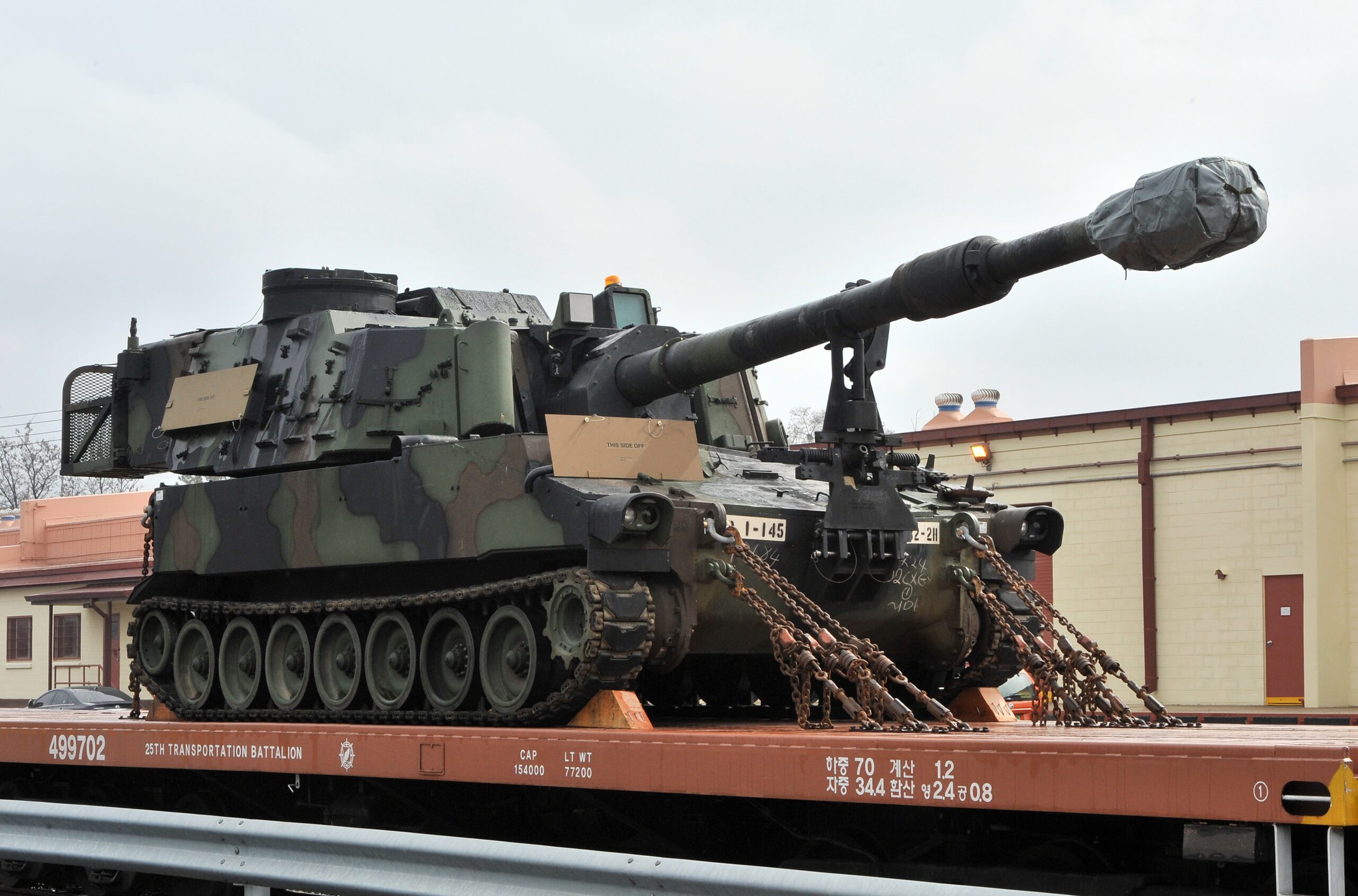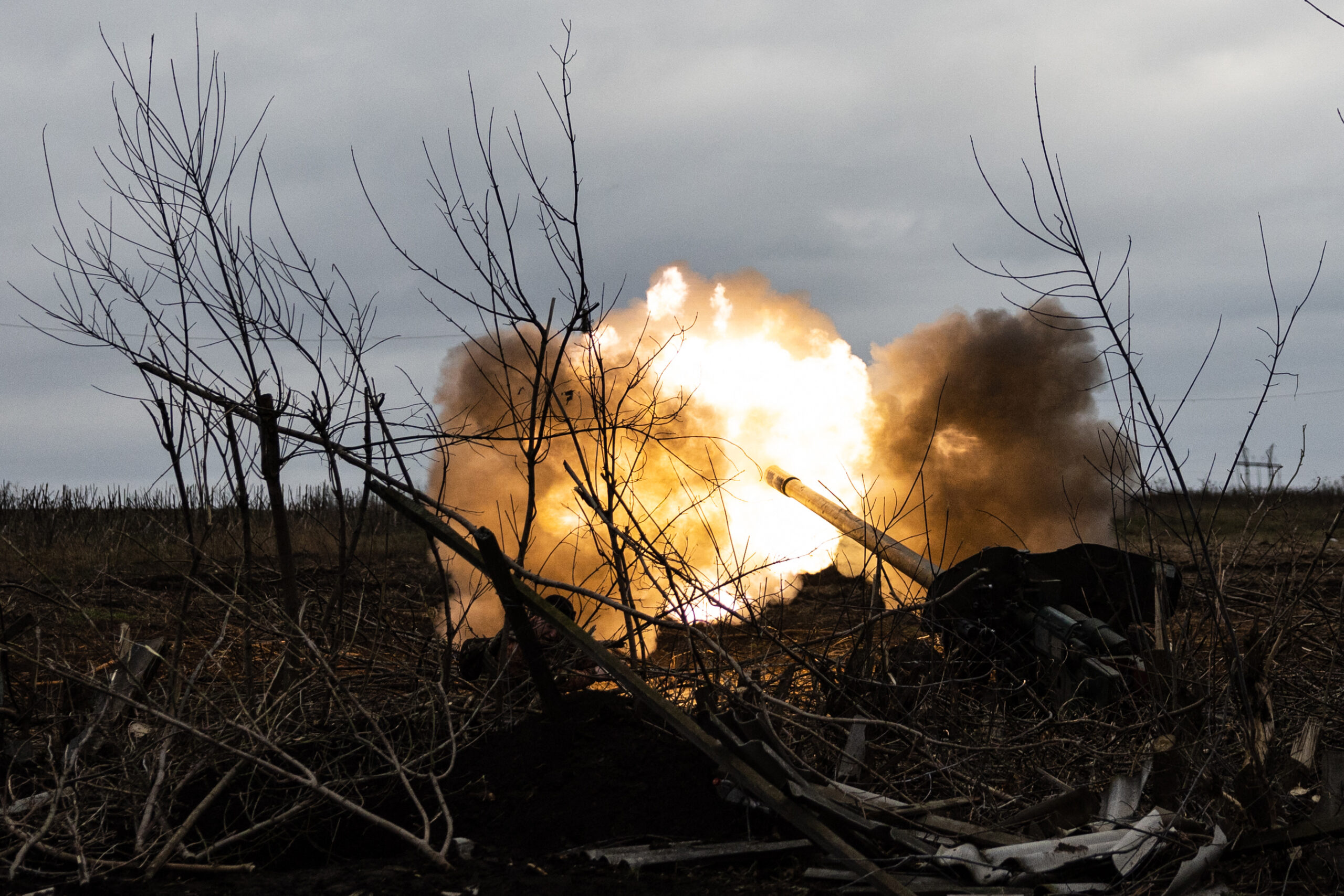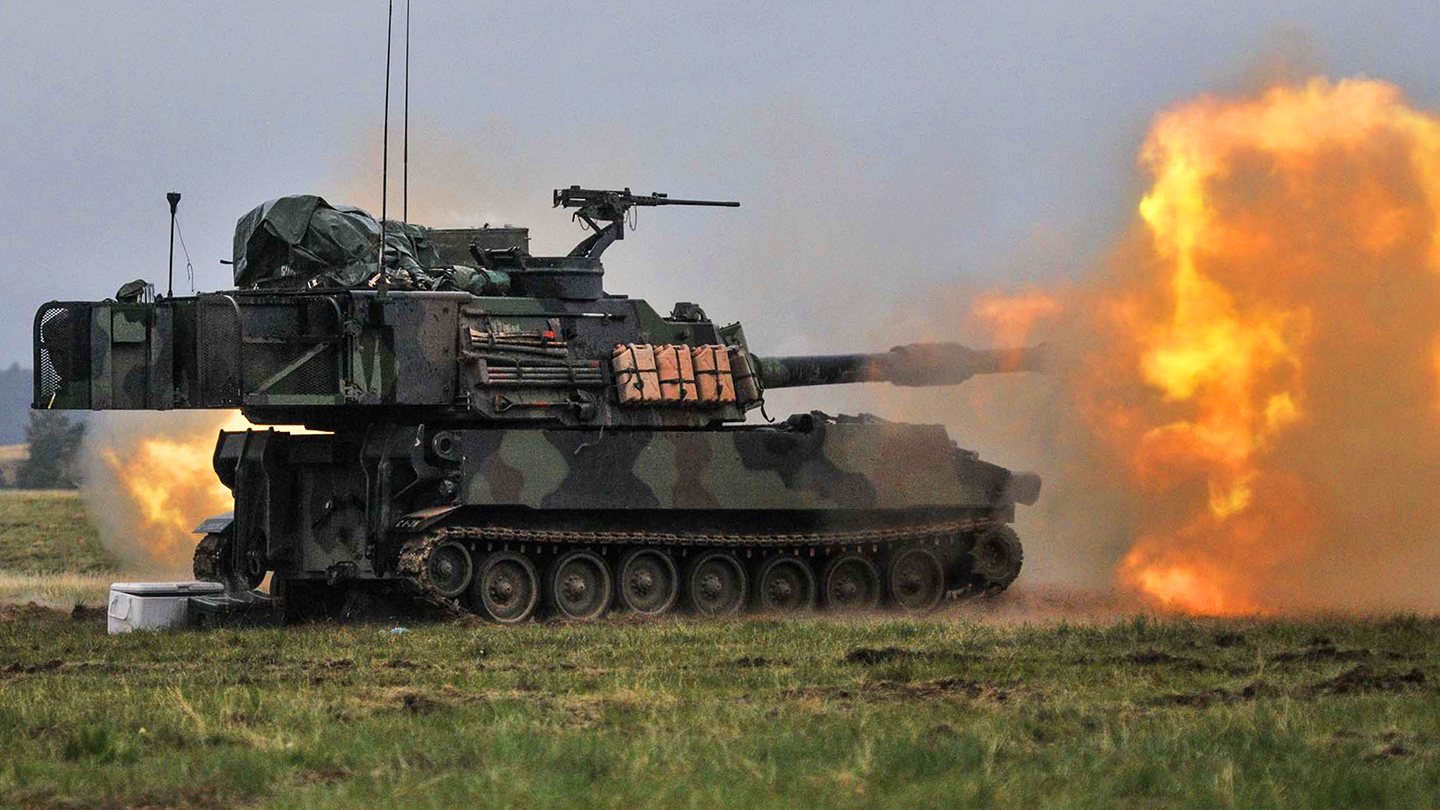Last month, Valery Zaluzhny, the commander-in-chief of the Ukrainian Army, told The Economist what was needed to restore Ukraine’s territory to its borders before Russia’s full-on invasion. Friday, the Pentagon took another partial step toward fulfilling those wishes with a new $3 billion aid package headlined by 50 M2A2-ODS Bradley Fighting Vehicles.
“I know that I can beat this enemy. But I need resources,” Zaluzhny said back in December. “I need 300 tanks, 600-700 IFVs [Infantry Fighting Vehicles], 500 Howitzers. Then, I think it is completely realistic to get to the lines of February 23rd.”
All told, the $2.85 billion Presidential Drawdown package includes no tanks, but among the Bradleys and Sea Sparrow missiles, more than 300 other vehicles are being donated, including 18 M109A6 Paladin 155mm self-propelled howitzers – another first for Ukraine. An additional 36 105mm towed howitzers are also on the list.
The Paladins “will provide greater protection and maneuverability than the towed howitzers previously provided,” Laura Cooper, deputy assistant defense secretary for Russia, Ukraine and Eurasia, told reporters including from The War Zone, during a Friday afternoon press briefing. The U.S. has previously provided 178 towed howitzers to Ukraine. The package also includes spare parts for the Bradleys, she said.

The new package is part of a growing effort by the U.S. and its allies – who also recently agreed to provide heavy armored vehicles like German Marders and French AMX-10 RCs – to improve Ukraine’s ability to conduct maneuver warfare and “change the equation on the battlefield,” Air Force Brig. Gen. Pat Ryder, the Pentagon’s chief spokesman, told reporters. It meshes with a new maneuver training program for Ukrainians announced last month, he said.
“As you look at the U.S. and the international response by providing the equipment, and importantly now the training that we’re providing, it does afford Ukraine an opportunity to change the equation on the battlefield and gain momentum and not only defend their territory, but hopefully take back territory,” Ryder said. “And so this is part of the ongoing efforts to support them in that larger campaign.”
There are several dynamics in play right now in that larger campaign.
The two sides are locked into deadly battles over inches of territory in the Donetsk and Luhansk oblasts. Ukraine is eyeing an assault to liberate Crimea while the Russians have moved troops and supplies into Belarus amid concerns that Moscow may try to launch some kind of new offensive in the next month or so, although the likelihood of that happening is still very much up to debate.

Cooper told reporters she would not telegraph Ukraine’s immediate battlefield goals.
“We give them advice,” she said. “We give them equipment and training to be able to meet their objectives. But I’m not going to speak for what Ukraine’s specific near-term territorial objectives are.”
But the goal of this package, along with the maneuver warfare training set to begin later this month, is to “change the dynamic” of deadlock, she said.
“When I say change this dynamic, it’s this dynamic that you see right now where it’s inches forward. Whether it’s the Russians and Bakhmut or even the Ukrainians trying to kind of inch forward, we believe that through that combined arms training, they will better be able to integrate all of their different capabilities. That includes artillery, all types of fires, as well as maneuver to be able to make greater progress on the battlefield and really push back on these Russian positions.”
The Bradleys will play a big role in that, she said.
“When I talk about interchanging that dynamic on the battlefield and enabling the Ukrainian Armed Forces with additional capability, it is so that they can not just apply artillery to a given position, but can also integrate with maneuver and actually be able to regain territory and the Bradley specifically has formidable anti-armor capabilities that will work against every kind of armor capability that Russia has fielded in Ukraine.”
Cooper did not rule out additional Bradleys going to Ukraine in the future.
“We’re always looking at what comes next,” she said. “So I’m not gonna say that this is the end but I’m also not going to say that it’s the start.”
Defense Secretary Lloyd Austin, she noted, is attending the next meeting of the Ukraine Contact Group of 50 defense ministers working to provide Ukraine with arms later this month. There they will get a sense from Ukrainian Defense Secretary Oleksii Reznikov about his country’s needs.
The issue of tanks will no doubt come up, but on Friday Cooper said the U.S. is not ready to directly provide tanks like the Abrams.
“We absolutely agree that Ukraine does need tanks,” she said. “It’s one of the reasons that we’ve partnered with the Netherlands to refurbish a number of T-72 tanks that are already arriving on the battlefields. But we have to be cognizant of maintenance and sustainment considerations with tanks, and certainly we know that the Abrams tank, in addition to being a gas guzzler, is quite challenging to maintain.”
The package, the 29th such drawdown of U.S. weapons to Ukraine, includes an assortment of howitzer shells, RIM-7 Sea Sparrow surface-to-air missile, which you can read more about here, and other equipment, as well as $225 million in Foreign Military Financing to contribute to the long-term capacity and modernization of Ukraine’s military. It brings the total security assistance to Ukraine under the Biden administration to nearly $25 billion and builds on previous packages that have included about 2,500 vehicles of all kinds.
Here’s the full list:
- 50 Bradley infantry fighting vehicles with 500 TOW anti-tank missiles and 250,000 rounds of 25mm ammunition;
- 100 M113 Armored Personnel Carriers;
- 55 Mine Resistant Ambush Protected Vehicles (MRAPs);
- 138 High Mobility Multipurpose Wheeled Vehicles (HMMWVs);
- 18 155mm self-propelled Howitzers and 18 ammunition support vehicles;
- 70,000 155mm artillery rounds;
- 500 precision-guided 155mm artillery rounds;
- 1,200 155mm rounds of Remote Anti-Armor Mine (RAAM) Systems;
- 36 105mm towed Howitzers and 95,000 105mm artillery rounds;
- 10,000 120mm mortar rounds;
- Additional ammunition for High Mobility Artillery Rocket Systems (HIMARS);
- RIM-7 missiles for air defense;
- 4,000 Zuni aircraft rockets;
- Approximately 2,000 anti-armor rockets;
- Sniper rifles, machine guns, and ammunition for grenade launchers and small arms;
- Claymore anti-personnel munitions;
- Night vision devices and optics;
- Spare parts and other field equipment.
After the package was announced, Ukrainian President Volodymyr Zelensky, who has vowed to liberate Crimea, thanked the U.S. and its allies.
“We managed to bring Ukraine’s strength and defense cooperation with partners to a new level,” he said on his Telegram channel. “After my visit to the United States of America two weeks ago, there were already more than twenty stages in our diplomatic marathon.
And today a new one was announced – and a very powerful one! – a package of American defense support for our country.”
The Bradley, he said, “is exactly what is needed. We see absolutely concrete results of our visit and negotiations. Germany has taken a significant step forward in strengthening the security of not only Ukraine, but also the whole of Europe…I thank everyone who protects our country! Thanks to everyone who keeps Bakhmut and Donetsk region! To everyone who is moving forward in Luhansk region! To all who hold the south! To all who protect our sky!”
It will take “a couple of months” to get the Bradleys fielded, said Cooper, including time to train Ukrainians on how to use them.
How and where they will operate is as yet unknown.
But as Zaluzhny told The Economist, “I get what I get, but it is less than what I need. It is not yet time to appeal to Ukrainian soldiers in the way that Mannerheim appealed to Finnish soldiers,” a reference to a 1940 speech by Finland’s commanding general after being forced to give up land to what was then the Soviet Union.
“We can and should take a lot more territory,” Zaluzhny told The Economist.
When all this new armor and artillery does arrive, Ukraine will be in a better position to do just that.
Contact the author: howard@thewarzone.com
